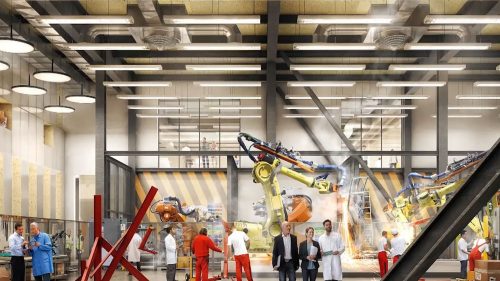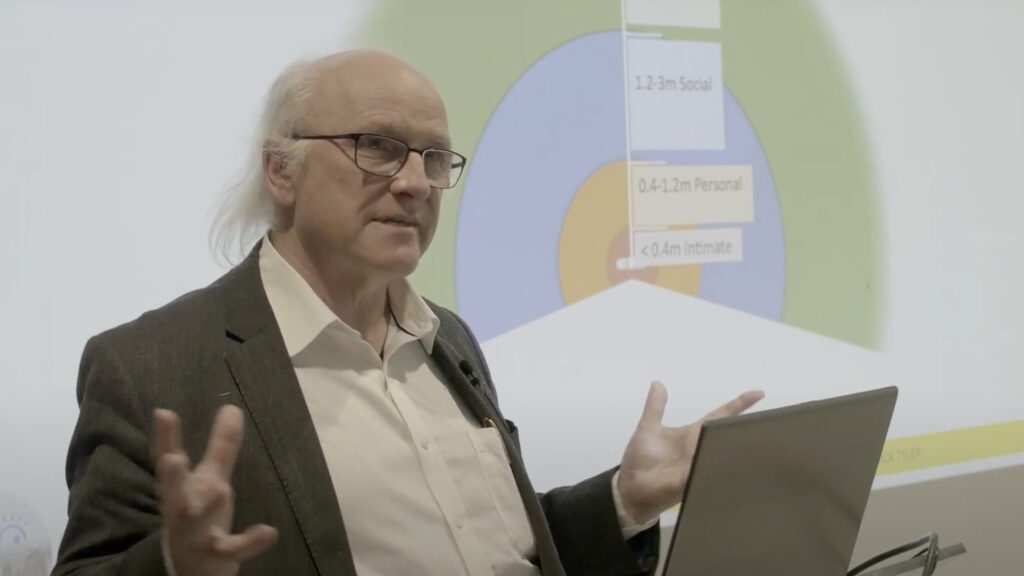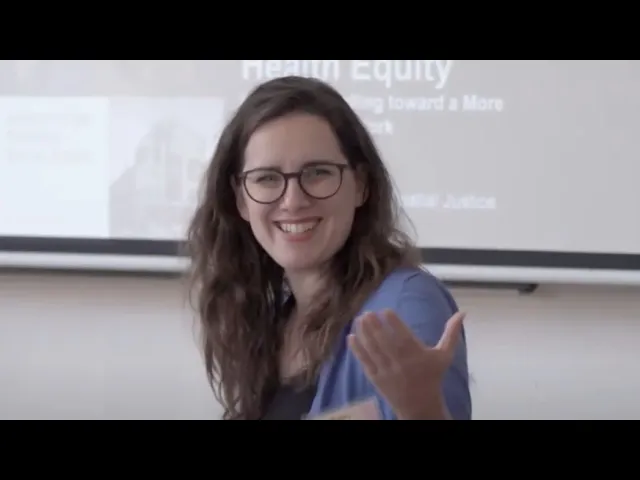“It is perfectly true, as the philosophers say, that life must be understood backwards. But they forget the other proposition, that it must be lived forwards.” Soren Kierkegaard, Journals IV A 164 (1843)
There are just two fundamental built environment professions, the architect and the engineer. I must be careful because neither do I mean by this that these are in competition for the ‘intellectual turf’. I believe that they form a division of labour and that each absolutely requires the other. Nor are they defined by membership of institutions. In my terms, there are engineers who practice as great architects and the reverse, just as there are planners and surveyors who do both. What I intend by making the distinction is to point out a fundamental distinction in practice and purpose between two modes of working of the many professions that shape our environment. One is driven by learning from the past, the other by envisioning a future never before seen. I suggest that they encapsulate Soren Kierkegaard’s distinction between life as ‘understood’ and as ‘lived’. These are ‘the engineer’ and ‘the architect’ of my archetype.
To make this distinction I must generalise, and generalisations are always risky, so please take this in the spirit intended. Engineering emerged as a profession out of the great progress in the 18th and 19thcenturies in western science. As the laws of physics were discovered and formulated mathematically it became clear that this made possible the perfection of structures and machines by design in advance of building. Prior to this, knowledge existed and was passed down as a vernacular craft tradition. The master builders of the past learned their trades at the knees of their predecessors and largely through active engagement in practice. Marvellous feats of both engineering and architecture were produced in this way, with great ingenuity and creative artistry, but the distinction I wish to draw relates to a post enlightenment division of labour.
The great innovations of western science came with the realisation that phenomena of the world could be represented as mathematical models, and that these models could then be used to predict. This way of thinking creates an immediate link between the past – the phenomena which are explained by the model and which calibrate its parameters – and the future – the predictions of the dynamics of some new, yet to be designed system. The process is highly rational and gives rise in engineering to both the primary mode of practice and to the process through which the profession is educated and through which it develops.
A conventional engineering programme in university will teach the fundamental physical laws that an engineer must know and then will set practical design projects to ask the student to apply this knowledge. A first-year mechanical engineering project might be to “design a device to extract a cork from a bottle”. This simple project is open and can be successfully completed in numerous different ways. It requires demonstration of both scientific understanding, for example the principle of the lever or the screw and the coefficient of friction of cork on glass, and softer skills such an ability to estimate the surface area of a cork in contact with the bottle and the volume of air, or to make reasonable assumptions about the structural properties of cork. The output of the project would comprise a set of drawings of the device together with a set of calculations to demonstrate that it would work and would not fail. The highest marks would be reserved for a particularly innovative application of principles and an especially elegant design together with a thorough mathematical demonstration of its function based on the laws of physics, and analysis of its likely modes of failure and the steps taken to address these. In fact, it is extremely hard to innovate since almost all possible forms of cork extraction device seem to have been invented already, so the successful student is one who most ably goes through the motions to demonstrate understanding of a rational engineering design process.
Progress in engineering practice comes through learning from previous experience and adding that experience into design codes for the future. At the same time, engineering progresses by attempting to do things that have never been done before. On occasion practice progresses beyond the boundaries of current codes. For example, in the 1970s there were a series of box girder bridge collapses, in Melbourne, Milford Haven and Koblenz. All failed catastrophically due to flange buckling during construction of larger spans and sections than had been attempted until then. Learning from these failures was incorporated into codes and failure through this mode would be extremely unlikely today. In this sense engineering is both highly codified and backward facing. This I must urge, is not a negative statement. Engineering learns from the past and is based in experience, and because of its mathematical and logical basis has succeeded in developing an unparalleled profession and practice.
Turning now to architecture. I am going to make a serious suggestion about architecture and its education that may be anathema to many. My argument is in three parts: first, that architecture is central to society; that it acts to reproduce social forms and is a critical factor in the generation of new social forms and so in social development. This may raise cries of ‘determinism’ from some, however I counter that with my second proposition; that epistemology in architecture is fundamentally different to that in the natural sciences and engineering. Where the role of theory in the natural sciences is to explain phenomena in the world, to produce theories and models that predict ‘what-if’ results; architecture, and architectural theory, are integral aspects of the phenomenon of society itself. In other words, there is no single direction to a causal arrow on which determinism depends, but rather, a feedback process of emergence within which architecture (the physical and spatial object), society and theories about architecture, all depend upon and produce one another.
On the face of it this may appear tautologous, but please bear with me as this part of the argument will require some careful unpacking. It depends upon a role for cognition in the construction of social forms that I argue has reached a higher level of development amongst humans than other social lifeforms, and which I suggest could only come about following the ‘discovery’ of the social effects of our physical and spatial environment. I place the word ‘discovery’ in scare quotes for a good reason. I do not intend to imply that this was somehow a conscious act. Anthony Giddens1, contends that reflective self-awareness and awareness of theories about society is a condition of modernism. So perhaps it was an emergent phenomenon about which we have only relatively recently become consciously aware.
The final part of the argument is about the role of education. If you have accepted my first two propositions, then this has clear and radical implications for the role, and therefore the education, of architects. Briefly, my third proposition is that one distinctive role of the architect is to envision a future that could not have been predicted on the basis of the past. It is this, I suggest, that produces a direction of travel in social development. It is therefore this capacity to envision social futures – the prospective – that must form the essential core to architectural education. This paints the canvas of architectural education perhaps more broadly than is usually accepted to include technological development, innovation and social and political policy – in fact all of contemporary ‘life’ as Kierkegaard might have it.
My reasoning is based on the earliest history of human construction. There was a radical step change in human development that occurred about 10,000 BCE when it is believed that climatic changes from the Pleistocene to the Holocene first made settled agriculture possible. At the same time humans first started to build dense settlements. It seems possible that building predated settled arable agriculture since the first settlements appear to be Neolithic manufacturing and trading sites. Whether chicken or egg, settlement and dense building presaged a massive series of social and technological developments. In the space of just a few thousand years (that is a few hundred generations), writing, money, agriculture and communal infrastructure for storage and irrigation had all been developed. Sophisticated political structures and laws had been framed and the elements of the earliest ‘states’ had been formed. I have written elsewhere about the possible history of human social development and the role of the built environment in this2, so let me summarise.
The discovery or invention upon which a staggeringly rapid period of human development seems to have hinged relates to the effect of our immediate environment on facilitating or inhibiting awareness and social contact between people. By configuring built divisions and access – walls and doors if you prefer – built space was found to create the conditions needed for social structures to form and to be reproduced. We built patterns of space that we found agreeable to our physiology and form of society, and we then appropriated the affordances of these spaces according to the uses that they were suited to. There is a social aesthetic at play here3. What we find ‘agreeable’ is dependent upon our social context, whilst I argue our social context in part determines what we find agreeable4.
Rather than tautologous, I would prefer to describe this feedback loop as a self-reinforcing dynamic. Those societies whose building forms supported innovative social cultures grew and prospered, generating further innovations that in turn supported still greater growth. Amongst these innovations were those that involved the configuration of built space, and these in turn conserved productive social structures and so promoted the next cycle of innovation. The innovations were both institutional and technological, and led to a very rapid period of state formation. Technology (in its broadest sense) allowed increased carrying capacity of land, through for example, selective breeding of improved crops and domesticated animals, the construction of grain storage and irrigation systems, and so on. Surpluses allow time for investment in cultural activity, in story-telling and art and these in turn foster creativity. Institutional structures were facilitated by the invention of writing, a precursor to money and credit, which allowed trade to develop alongside divisions of labour and specialisation. These in turn both required and enabled regulation, law and authority, and so a political structure. Written histories lent legitimacy to political structures and the governing elite, as did the development of religious belief systems and military power. Those that developed these structures persisted for longer and so had greater opportunity to develop.
Every one of these transformations is of a ‘chicken and egg’ form in the sense that they are cyclical rather than with a single causal direction, making it impossible to say that one determined the other, however overall progress was inexorable, and with the benefit of hindsight, it was remarkably rapid and still accelerating today. These are the characteristics of an autocatalytic system in which I suggest the configuration of the built environment is an active component of the catalyst. Short of catastrophe no end to this acceleration is in sight, and some would suggest that we are about to see a radical increase in that rate of acceleration as the digital revolution matures and artificial intelligence, big data, ubiquitous networked computing and pervasive sensors begin to augment human cognitive capacity.
Let us review the role of architectural design in this light. One mechanism through which I have argued human social progress was created was the effect of the configuration of built space on the construction of social interfaces. By configuring space through walls and openings we constructed environments that supported structures of social relations. The fact that these were physical and spatial, and so persistent, made possible the persistence of social structures and institutions, even though these inhere in a multitude of individual, mobile and autonomous minds; the human individuals that compose society. By configuring dense urban settlement with buildings, streets and places, we constructed a mixing mechanism through which new social relationships were generated. The balance between conservation of social forms and generation of new forms appears to depend on the exact way in which the space of the built environment is configured and the rules imposed on its use by codes of social behaviour. It is the architect’s primary role to create and shape this environment. It would be no exaggeration to say that in doing this they have responsibility for shaping the emergent pathway of future society.
Today however, social structures are formed and reproduced not only by the way that people meet and interact face to face in real space, but also in the virtual spaces of social networks and communications infrastructure, and the media interfaces through which we interact with these. The digital world pervades all aspects of our social, cultural, economic and institutional existence. These structures are transforming and developing more rapidly than was ever possible for the physical and spatial environment. They are both more extensive, spanning the whole globe, and at the same time more intensely personal and local, present in your pocket and bedroom at all times of the day and night. And some would say that we have hardly scratched the surface of the affordances these technologies offer. The press is full of stories about their effects: in propagation of the Arab Spring uprisings, in the promotion of populist politics, and the influence of votes in the US elections and the EU referendum. In each case it is suggested that the configuration of social networks based on the dynamic effects of page rank algorithms leads to polarisation of populations and ideas, and opposing socially constructed realities of ‘truth’ and ‘fact’.
In this situation it is more or less impossible to rely on physical or social science based on past history to predict whether some intervention will work as planned. Unintended consequences and unknown unknowns abound. We have instead to turn from an engineering to an architectural mode of design – the prospective – in order to guide our interventions. To do this we have to educate designers in the properties of the whole host of new technologies so that they can exploit their affordances in imagining future worlds and future society. However, we must also be reflective of the exact difference between the rational mode of practice of the engineer and the essentially non-rational mode of practice of the architect.
I use the term ‘non-rational’ rather than ‘irrational’ for a reason. It is not that architects are incapable of rational argument, nor that architectural phenomena may not be lawful in themselves; it is that when developing a vision for a future that has never existed, no amount of rational or logical deduction can tell you what you ought to do. Instead one must rely on intuition, emotion and sentiment to think oneself into a future scenario and to imagine whether it would be found ‘agreeable’ to that future society. Once this future vision is agreed, rational engineering design may be used to help deliver it, but the question of ‘what to do’ is not amenable to this logic. This is an insight due to the engineer, economist and sociologist, Vilfredo Pareto writing at the turn of the 20th century5.
Pareto was writing at a time before the development of complexity science. He considered society to be in an equilibrium and subject to cycles of change over time. This he called ‘the circulation of elites’ noting that both revolution and democratic process inevitably lead to an elite that exerts control over the mass. The individuals may change but the power structure remains. If he were writing today I have a suspicion that he might recast his analysis in terms of complexity, and it is here that I think there may be some useful insights for the profession of architecture. If we consider fixed infrastructure as having configurational properties through which the parts relate to form a whole, whether this is the physical and spatial object of conventional built environments or the virtual and networked material of the digital domain, then the role of the ‘architect’ is to form these configurations so as to support some desired emergent pathway for society. This is the basis for both the smart city and the responsive environment. Understanding the dynamics and mechanisms at play in this new environment defines a major programme of research.
Both research and education are of course inextricably bound to human progress, and the structure and history of both engineering and architecture as university disciplines is instructive. Both were first introduced as university subjects by UCL in the early 19th century amongst the new sciences of the enlightenment, as a part of Jeremy Bentham’s great project, and have progressed since then changing focus as the subjects themselves and their relationship to society have evolved. At the Bartlett we have a long history in both research and education which places architectural practice as a central component of human development and progress. In the 1960’s and 70’s, following his paper to the RIBA Conference on Architectural Education, Richard Llewelyn Davies6 rebuilt the Bartlett as a ‘meeting grounds’ between the various physical and social sciences implicated in the built environment. Bill Hillier’s ‘space syntax’ research developed out of this to define a lawful role for spatial configuration (and so architecture) in the conservation and generation of social forms, so proposing a place for architecture in social science7,8,9. By the late 1980’s Llewelyn Davies’ broadly rational programme had begun to show its failings in design education and the Bartlett School of Architecture turned to Peter Cook’s pursuit of the emotional and intuitive in design. The synthesis of the rational and intuitive in both research and education began in earnest with the appointment of Frederic Migayrou as Bartlett Professor in 2012. He established B-Pro (Bartlett Prospective) as a vehicle for post-professional research and education10.
In 2017 we opened a new building at HereEast on the Olympic Park at Hackney Wick. This brings together the Bartlett and Engineering faculties – for the first time in 176 years – around a large space for manufacturing, environmental and structural testing and robotics. This may sound prosaic, but it brings together people and disciplines. Architects, computer scientists, medical engineers, civil engineers, surveyors and geomatic engineers, heritage scientists, chemists, lighting and environmental engineers, fabricators, dancers, acousticians and artists, just to mention some of those present. The vision is around the affordances that technology creates for the future of human society and the environment. The structuring themes are ‘scale’ and ‘the senses’. Tele-robotics allow humans to extend the range of metric scales at which they can interact with the physical world. At the microscale of the biological cell, haptic feedback allows one to feel the surface of the cell wall with the needle used to inject DNA, while a large manufacturing robot can allow one person to lift and manipulate precisely into position a structural component weighing several tons. At the same time sensors allow us to perceive outside the spectra of human vision. Microscopes allow us to see the cell, ultrasound allows the surgeon to see beneath the flesh, to guide tele-robotic instruments through the keyholes in the patient’s skin, and scanners on a snake robot to capture the geometry of the aircraft wing to micrometre precision. At the heart of all this lie computing and geometry creating an interface between human, machine and the physical world.
The main research space has been equipped with an array of high-resolution cameras capable of tracking and giving feedback on the location of everything within the space. This is being used to give robots and autonomous drones an awareness of their environment – including the most unpredictable of entities – the human occupants. The space itself is being used to develop research into hybrid human robotic collaboration, with a view to developing ways for these interactions to be safely designed. Understanding humans is as much our concern as technology. Environmental chambers and lighting simulators allow human subject research into our perceptions of heat and light, and the way that these can be controlled to create environments agreeable to our physiology.
The discovery of architecture 10,000 years ago instigated a cognitive and social leap that goes far beyond physiology. We have therefore been developing new policy research units aimed at taking architectural design thinking and applying it to the institutional structures of government and markets through which society develops. The Institute of Global Prosperity directed by Henrietta Moore takes anthropological methods and learning and applies this to sustainable development. The Institute of Innovation and Public Purpose directed by Mariana Mazzucato is using insights from institutional economics to redefine the policy debate around the role of the public sector in innovation and creation of public value. The Bartlett Real Estate Institute, directed by Andrew Edkins and chaired by Yolande Barnes, is bringing analysis of intangible public goods to the valuation of property investment and so to influence the way that the built environment is financed.
All of these are designed to address challenges outlined in the 2017 Design Commission Inquiry: People and Places: Design of the Built Environment and Behaviour11. However, they go further. As humans appropriate new technologies, they also develop new institutional structures. The digital marketplaces and social networks which today are transforming our high streets and political fora are the precursors for more far reaching transformational change. If it is the role of the architect to envision a world never before seen, then they must also be equipped with an understanding of the technologies, environmental systems and socio-political structures that these futures will consist of.
Now to the nub of my argument. The transition in climate created by the last 10,000 years of human progress is from the Holocene to the Anthropocene. Human society and technology are now completely entangled with the whole planetary environment and ecosystem. When I said earlier that ‘short of catastrophe’ no end was in sight to the acceleration of human progress, sadly that catastrophe is all too possible. This requires that the built environment professions; the architect, engineer, planner and surveyor; adopt a new ethical basis. Unlike the medical professions for whom the primary responsibility is the patient or client, the built environment professions primary responsibility must be to the public at large and future generations. As built environment researchers and educators our responsibility is similarly to future generations, and it is for this reason that educating the ‘prospective’ practitioner must be our mission for the coming years – if we are to hope to avoid environmental and social catastrophe calling a rapid stop to the ever-accelerating rate of human progress.








